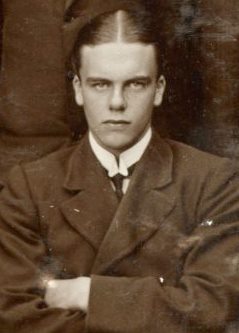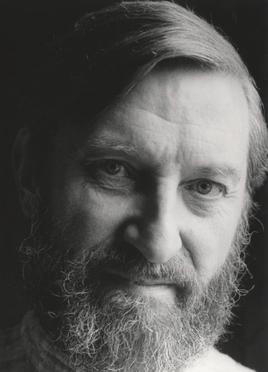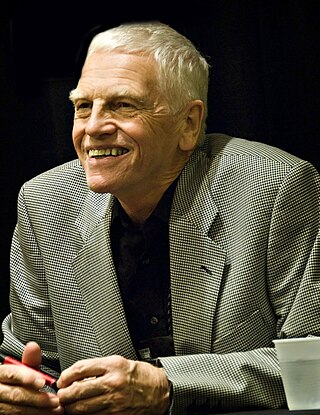
Dame Agatha Mary Clarissa Christie, Lady Mallowan, was an English writer known for her 66 detective novels and 14 short story collections, particularly those revolving around fictional detectives Hercule Poirot and Miss Marple. She also wrote the world's longest-running play, the murder mystery The Mousetrap, which has been performed in the West End of London since 1952. A writer during the "Golden Age of Detective Fiction", Christie has been called the "Queen of Crime"—a moniker which is now trademarked by her estate—or the "Queen of Mystery". She also wrote six novels under the pseudonym Mary Westmacott. In 1971, she was made a Dame (DBE) by Queen Elizabeth II for her contributions to literature. Guinness World Records lists Christie as the best-selling fiction writer of all time, her novels having sold more than two billion copies.

Ellery Queen is a pseudonym created in 1928 by the American detective fiction writers Frederic Dannay (1905–1982) and Manfred Bennington Lee (1905–1971). It is also the name of their main fictional detective, a mystery writer in New York City who helps his police inspector father solve baffling murder cases. From 1929 to 1971, Dannay and Lee wrote around forty novels and short story collections in which Ellery Queen appears as a character.

John Dickson Carr was an American author of detective stories, who also published using the pseudonyms Carter Dickson, Carr Dickson, and Roger Fairbairn.

Margery Louise Allingham was an English novelist from the "Golden Age of Detective Fiction", and considered one of its four "Queens of Crime", alongside Agatha Christie, Dorothy L. Sayers and Ngaio Marsh.

Anthony Berkeley Cox was an English crime writer. He wrote under several pen-names, including Francis Iles, Anthony Berkeley and A. Monmouth Platts.
Edward Dentinger Hoch was an American writer of detective fiction. Although he wrote several novels, he was primarily known for his vast output of over 950 short stories. He was one of the few America fiction writers of his generation who supported himself financially through short story publication, rather than novels or screenplays.
Michael Francis Gilbert was an English solicitor and author of crime fiction.

Freeman Wills Crofts FRSA was an Irish engineer and mystery author, remembered best for the character of Inspector Joseph French.
Julian Gustave Symons was a British crime writer and poet. He also wrote social and military history, biography and studies of literature. He was born in Clapham, London, and died in Walmer, Kent.

Henry Reymond Fitzwalter Keating was an English crime fiction writer most notable for his series of novels featuring Inspector Ghote of the Bombay CID.

The Golden Age of Detective Fiction was an era of classic murder mystery novels of similar patterns and styles, predominantly in the 1920s and 1930s. The Golden Age proper is in practice usually taken to refer to a type of fiction which was predominant in the 1920s and 1930s but had been written since at least 1911 and is still being written today. In his history of the detective story, Bloody Murder: From the Detective Story to the Crime Novel, the author Julian Symons heads two chapters devoted to the Golden Age as "the Twenties" and "the Thirties". Symons notes that Philip Van Doren Stern's article, "The Case of the Corpse in the Blind Alley" (1941), "could serve ... as an obituary for the Golden Age." Authors Agatha Christie, Dorothy L. Sayers, Margery Allingham, and Ngaio Marsh have been collectively called the Queens of Crime.
William Theodore Link was an American film and television screenwriter and producer who often worked in collaboration with Richard Levinson.

Peter Harmer Lovesey, also known by his pen name Peter Lear, is a British writer of historical and contemporary detective novels and short stories. His best-known series characters are Sergeant Cribb, a Victorian-era police detective based in London, and Peter Diamond, a modern-day police detective in Bath.
Mignon Good Eberhart was an American author of mystery novels. She had one of the longest careers among major American mystery writers.
Kenneth Martin Edwards is a British crime novelist, whose work has won multiple awards including lifetime achievement awards for his fiction, non-fiction, short fiction, and scholarship in the UK and the United States. In addition to translations into various European languages, his books have been translated into Japanese, Chinese, Korean, and Taiwanese. As a crime fiction critic and historian, and also in his career as a solicitor, he has written non-fiction books and many articles. He is the current President of the Detection Club and in 2020 was awarded the Crime Writers' Association's Diamond Dagger, the highest honour in British crime writing, in recognition of the "sustained excellence" of his work in the genre.

Agatha Christie (1890–1976) was an English crime novelist, short-story writer and playwright. Her reputation rests on 66 detective novels and 15 short-story collections that have sold over two billion copies, an amount surpassed only by the Bible and the works of William Shakespeare. She is also the most translated individual author in the world with her books having been translated into more than 100 languages. Her works contain several regular characters with whom the public became familiar, including Hercule Poirot, Miss Marple, Tommy and Tuppence Beresford, Parker Pyne and Harley Quin. Christie wrote more Poirot stories than any of the others, even though she thought the character to be "rather insufferable". Following the publication of the 1975 novel Curtain, Poirot's obituary appeared on the front page of The New York Times.
Douglas G. Greene is an American historian, editor, and author. He is the son of Margaret Chindahl Greene and the Reverend George L. Greene, He is married to Sandi Greene with whom he has a son, Eric and a daughter, Katherine, and has an identical twin, David L. Greene, and a younger brother Paul.
Crippen & Landru Publishers is a small publisher of mystery fiction collections, based in Cincinnati, Ohio, United States. It was founded in 1994 by husband and wife Sandi and Douglas G. Greene in Norfolk, Virginia, United States, and is named after murderers Dr. H. H. Crippen and Henri Landru. The Greenes' son Eric designed the logo. Jeffrey Marks succeeded Douglas G. Greene as publisher on January 1, 2018, while Dr. Greene remains active as Series Editor.

The Golden Age of Murder is a book written by Martin Edwards and published by HarperCollins on 7 May 2015 which later went on to win the Edgar Award for Best Critical / Biographical Work in 2016.
John Curran is an Irish literary scholar and archivist, best known as an expert on the work of Dame Agatha Christie, English author of detective fiction and the world's bestselling novelist. He was born in Dublin and for years edited the Agatha Christie newsletter, subscriptions to which are handled through the author's official website. He wrote his doctoral thesis on Christie at Trinity College. He served as a National Trust consultant during the restoration of Christie's Devon residence, the Greenway Estate.









